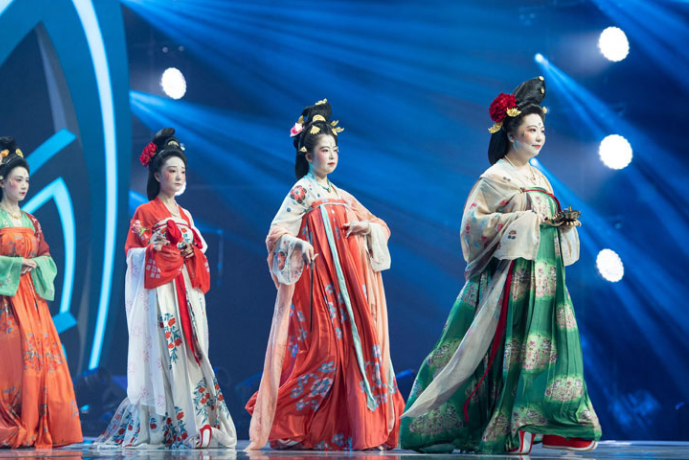Yes, Hanfu clothing is growing rapidly in China, with sales increasing by 20% annually.
Industry Growth and Statistics
The Hanfu industry, once a niche market, has blossomed into a significant sector within China’s fashion industry. This growth is not just a byproduct of nostalgia but a reflection of a broader cultural renaissance. With the youth at its forefront, Hanfu isn’t merely a garment; it’s a symbol of cultural identity and pride.
Recent Sales Trends in Hanfu
In the past five years, Hanfu sales have skyrocketed. According to a report by the China Hanfu Association, sales figures jumped from 1 billion yuan in 2015 to an astonishing 4.5 billion yuan by 2020. This growth isn’t just limited to numbers. The variety and quality of Hanfu have also improved, with designers blending traditional aesthetics with modern fashion sensibilities. Events like Hanfu parades and festivals contribute significantly to this trend, creating a vibrant community and a growing market.

Comparison with Other Traditional Clothing Industries
Comparatively, the Hanfu industry’s growth trajectory stands out. For instance, Japan’s Kimono industry, while culturally significant, has seen a relatively stable market size, with an estimated annual revenue of around 200 billion yen (approximately 1.5 billion yuan). In contrast, Hanfu’s growth rate is much higher, indicating a robust and expanding market. This difference can be partly attributed to Hanfu’s appeal to a broader age range and its adaptability to modern fashion trends. Moreover, the global Chinese diaspora and China’s increasing cultural influence abroad provide a wider audience for Hanfu, unlike the more regionally focused markets of other traditional attires.
Consumer Demographics and Preferences
The Hanfu movement, more than a fashion statement, resonates deeply with a diverse consumer base. This demographic shift reflects a broader cultural identity movement, with consumers from various backgrounds finding unique value in Hanfu.
Age and Gender Distribution of Hanfu Consumers
Hanfu consumers predominantly fall within the younger age groups. A recent survey shows that over 60% of Hanfu enthusiasts are between the ages of 18 and 30. This demographic skews slightly more female, with women making up approximately 70% of this consumer base. The table below illustrates this distribution:
| Age Group | Percentage of Consumers |
|---|---|
| 18-24 | 35% |
| 25-30 | 25% |
| 31-40 | 20% |
| 41+ | 20% |
Consumer Motivations for Purchasing Hanfu
The motivations for purchasing Hanfu are as varied as the consumers themselves. For many, it’s a way to connect with Chinese history and culture, a sentiment echoed by the growing interest in traditional festivals and cultural events. Others are drawn to the aesthetic appeal of Hanfu, finding in its elegance and uniqueness a fashion statement. Additionally, the community aspect — the sense of belonging to a group that shares cultural values and interests — plays a significant role in consumer motivation.
Influence of Social Media and Culture
The resurgence of Hanfu owes significantly to the dual influence of social media and the broader cultural revival in China. This synergy has not only popularized Hanfu but also cemented its place in modern Chinese culture.
Role of Social Media in Promoting Hanfu
Social media platforms have been pivotal in Hanfu’s resurgence. On platforms like Weibo and Douyin, Hanfu-related posts and videos often go viral, reaching millions. For instance, during major cultural festivals, hashtags related to Hanfu witness a surge in engagement, sometimes garnering over 100 million views. Influencers play a key role, showcasing Hanfu’s versatility in daily life and special events. This widespread exposure has significantly reduced the cultural and generational gap, making Hanfu a trending topic among diverse age groups.
Hanfu’s Impact on Modern Chinese Culture
Hanfu’s influence extends beyond fashion, seeping into various facets of modern Chinese culture. It has inspired a new appreciation for traditional arts and crafts, leading to a revival of ancient music, dance, and even calligraphy. Hanfu-themed events and festivals draw thousands, highlighting a growing interest in cultural heritage. This movement has also encouraged dialogue about cultural identity and heritage preservation in China, resonating with a national sentiment of cultural pride and rediscovery.
Challenges and Sustainability
While the Hanfu industry enjoys growing popularity, it faces unique challenges and questions about its long-term sustainability. Addressing these concerns is vital for the industry’s future.
Challenges Faced by the Hanfu Industry
One of the primary challenges is the high production cost. Traditional Hanfu requires intricate designs and quality materials, which can drive up prices. This aspect potentially limits its accessibility, especially among younger consumers. Moreover, there is a lack of standardization in Hanfu sizes and styles, which can confuse new customers. Another significant challenge is the competition from fast fashion brands that offer cheaper, less authentic versions of Hanfu, appealing to budget-conscious consumers.
Additionally, the industry faces cultural challenges. While Hanfu symbolizes traditional Chinese culture, it must balance tradition with modern fashion trends to remain relevant. This balancing act can be delicate, as straying too far from traditional designs may alienate purists, while not innovating could make Hanfu less appealing to younger demographics.

Sustainability and Long-term Viability
For long-term viability, the Hanfu industry must address sustainability issues. The environmental impact of textile production is a growing concern globally. Hanfu producers are increasingly looking towards sustainable fabrics and eco-friendly production methods.
Another aspect of sustainability is cultural. Ensuring Hanfu remains a symbol of Chinese heritage, rather than a passing fashion trend, is crucial. This involves educational initiatives, collaborations with cultural institutions, and participation in cultural events. By doing so, Hanfu can maintain its cultural significance and appeal to a broader audience.
In terms of market sustainability, diversifying the product range and exploring international markets could be key. With China’s global cultural influence on the rise, Hanfu has the potential to appeal to international audiences interested in Chinese culture. However, this expansion requires careful marketing strategies to ensure cultural sensitivity and authenticity.